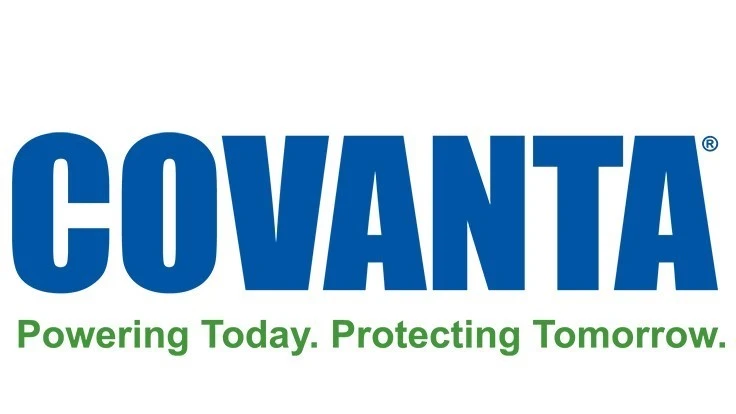
Covanta Energy of Morristown, New Jersey, has released its second quarter financial earnings. Here are the highlights:
- Total revenue for the quarter was $467 million, up $13 million from the second quarter of 2018.
- Organic growth, excluding the impact of commodities, contributed $8 million as higher waste prices outweighed lower construction revenue in the quarter.
- Commodities contributed to a $9 million decline in revenue related to lower market prices for both energy and metals year-over-year.
- Adjusted EBITDA was $94 million in the quarter, a $9 million decline compared to the second quarter of 2018.
- Full year 2019 adjusted EBITDA is now expected to be in the range of $420 million to $445 million, representing a $20 million reduction from the company’s initial guidance based solely on commodities.
Covanta President and CEO Steve Jones held a conference call with investors July 26 to discuss the quarter. Here are some highlights from the call.
Jones with general thoughts on Q2:
“Our core business of operating infrastructure is performing as well as it ever has, and we continue advancing on our long-term strategic growth objectives. While recent commodity price volatility, specifically for power and for scrap metal, has impacted our financial results and outlook for the year, I'm very pleased with how the business is running.
“As a result, we've lowered our outlook for 2019 adjusted EBITDA reflecting this specific impact. Our existing guidance for free cash flow is unchanged. … I want to emphasize that this change is only related to recent movements in commodity prices.”
Jones on medical and other special waste
“A promising market segment opportunity … is regulated medical waste, which was up close to 40 percent on a net revenue basis in the second quarter. Overall, we expect to grow profiled waste revenue at our EfW [energy from waste] plants in the high single digits in 2019. …
“In addition to waste and plant operations, our metals and ash initiatives will be an important contributor to our organic growth this year. During the second quarter, we increased total metals recovery by 4 percent, and for the full year, we expect mid-single-digit growth in total metals recovery. Nonferrous recovery is a particularly important component of our growth within this line of business given the much higher unit values and material in that stream.”
Jones on contracts
“As solid waste contracts end, we increasingly have opportunities to reset in line with higher market prices. This quarter, we successfully re-contracted with two important and long-term customers, Boston and Philadelphia, for contracts through 2024 and 2025, respectively. We will enjoy price levels higher than previous levels for both of these contracts, given our convenient asset locations and the increasing cost of transportation and disposal at alternative sites in those markets. In light of our success to date in municipal solid waste pricing and profiled waste growth, we now expect full year same-store tip fee pricing to grow over 4 percent in 2019.”
Jones on commodity processing
“Our continued improvement in recovery stems from better utilization of our existing systems, installation of new equipment to refine our recovered tons, newer initiatives like mining ash that has not undergone metal recovery with our new mobile separation units, and ultimately, the development and rollout of our Total Ash Processing Systems or TAPS.
“We also seek to improve realized prices for each ton of material recovered. To this end, we process effectively all of our nonferrous and about one-third of our ferrous before selling to market.
“With regard to nonferrous, we recently began installing new separation equipment that enables further refinement of heavy metals by separating additional commodities like zinc, a valuable metal for which we have historically received no value.
“In advance of the start-up of this new separation equipment, note that we've recently been stockpiling nonferrous metals to feed the new equipment. This has had the impact of lowering nonferrous volume and revenue in the second quarter but will contribute to improved sales volumes and better realized prices in the third and fourth quarters.
“Let me briefly update you on the status of our first TAPS installation. We're now receiving the equipment at our facility in Fairless Hills, Pennsylvania, and expect to install and commission the equipment over the next several months. While we don't anticipate a significant financial contribution in 2019, we remain very excited about this technology and the broad-based opportunity to utilize it throughout the fleet. I look forward to providing more updates as we prove out the technology.”
Jones on U.K. developments
“Currently, we have two plants in construction [in the U.K.], Rookery and Earls Gate. In both cases, we're now in the civil construction stage … Construction is proceeding on plan, and as a reminder, we expect commercial operations in 2022.
“In the quarter, we continued to make progress towards completing development and reaching financial close on the Protos and Newhurst projects later this year. At that point, we'll have all four of our previously announced U.K. projects in construction.
“As a reminder, our equity investment across these four projects is expected to total between $150 million and $200 million, which we expect to yield annual cash flow of $40 million to $50 million. These are very attractive investments.
“On top of these four advanced projects, we continued to pursue multiple other U.K. projects in earlier stages of development. Given our world-class development and operations capabilities, our progress to date in the U.K. and the strength of our partnership with GIG [Green Investment Group], we are well positioned for further growth and remain an attractive potential partner for other developers.
“We've long discussed the U.K. policy drivers, including the landfill tax and a planned ban on biodegradable waste landfilling in Scotland in 2021. These drivers provide strong support for new EfW capacity. Today, over three million metric tons per year are being exported to Continental Europe in order to meet the growing gap in disposal capacity with an annual capacity shortfall of over 5 million tons projected over the next decade. The largest outlet for exported waste currently, the Netherlands, has recently begun discussing a tax on imported waste for EfW processing. We believe that this could put further pressure on U.K. domestic waste prices and heighten the urgency for sustainable, long-term in-country solutions. For these reasons, while we're pleased with our progress so far, we see even more opportunity in this market in the future.”
Get curated news on YOUR industry.
Enter your email to receive our newsletters.
Latest from Recycling Today
- Blue Whale Materials celebrates Oklahoma facility expansion
- Rising mill output creates ferrous market anticipation
- CDRA Conference & Tradeshow: Q&A with keynote Dave Mitchell of The Leadership Difference Inc.
- Tomra plastics recycling joint venture opens in Norway
- Loop Industries inks offtake agreement with Nike
- Liberty Tire Recycling to open 2 facilities in Alabama
- ABTC announces ‘substantial quarterly revenue increase’ in Q1 of FY26
- Amcor reports increased sales in Q1 of '26







